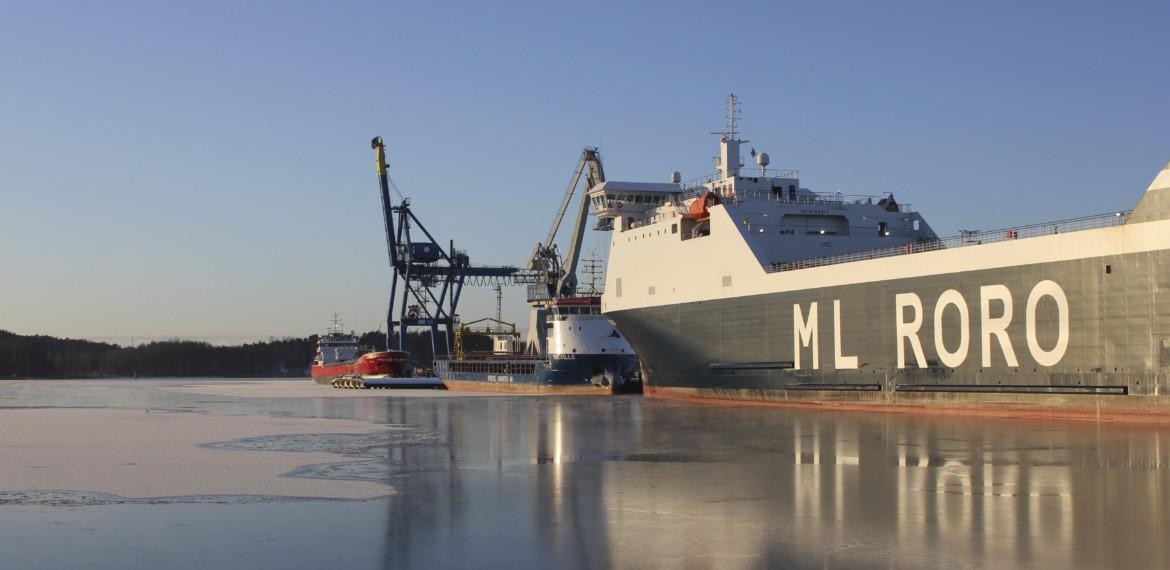Winter navigation needs to be taken into account in emissions trading
The European Commission is proposing that the scope of emissions trading should be extended to the maritime sector. According to Finland, the special characteristics of winter navigation should definitely be taken into account.

The European Commission published the extensive Fit-for-55 climate package in the summer and at the same time proposed that the scope of the emissions trading system to be extended to the maritime sector.
In the system, the shipping companies would have to purchase and surrender emission allowances for each tonne of reported emissions. Emissions trading would be applied in both intra-EU voyages and partially also in voyages starting or ending outside of the EU.

Niina Honkasalo, Senior Specialist in the Climate and Environment Unit of the Ministry and Transport and Communications says that extending the scope of emissions trading to maritime transports is justifiable. It is important that emissions are reduced in all sectors. According to her, however, the proposal should definitely take into account the special characteristics of winter navigation currently left out of the motion, otherwise Finland will not be treated equally with the other countries.
“Some 70 per cent of the vessels calling at Finnish ports are ice-strengthened. Because of that, they consume more fuel compared to ships intended for open water only.”
Finland wants equal treatment
Ms Honkasalo reminds that Finland is very much dependent on navigation. Emissions trading in the maritime sector would cause significant additional costs to shipping companies and charterers and hamper their competitiveness. It would also affect foreign trade and would consequently be reflected in households as well.
“We have calculated that in this form the proposal could mean annual costs of around 200–400 million euros in 2030 and around 100–300 million euros in 2040 for the maritime transports serving Finnish foreign trade and passengers. If the annual costs of emissions trading settled at the level of around 200 million euros in 2040, it would have a negative effect of around 0.04–0.06 per cent on the gross domestic product.”
It is difficult to estimate the ultimate costs, however. A lot depends on, for instance, at what level the prices of emissions allowances will settle, what other international or EU’s emission reduction measures will be introduced, and how the industry will adapt to those.
“The additional costs caused by winter navigation are of course the highest on routes with most ice. But even in open water, ice-strengthened vessels consume around five per cent more fuel than ships intended for open water only”, Ms Honkasalo points out.
She adds that actual ice-breakers will in any case be excluded from the emissions trading system.
Other means will also be introduced
The European Commission has also submitted an initiative for promoting the use of alternative fuels in maritime transports. The energy taxation directive is also being reformed.
“The joint and parallel effects of different measures need to be evaluated carefully – i.e. how they can be used to reduce emissions and what kinds of costs they will generate. The proposal concerning alternative fuels will lower the costs of emissions trading, which is also taken into account in our cost estimate. On the other hand, this proposal in itself will cause highly significant costs to maritime transports.”
Emissions trading alone will not easily result in changes in maritime transports, unless the prices of emission allowances rise considerably. That is because the reduction of emissions in maritime transports is still expensive. Emissions trading, however, encourages the shipping companies to introduce cost-efficient means for cutting the emissions and helps to create a demand for alternative fuels.
”By using alternative fuels we can really ensure that maritime transports will generate low emissions. But the important questions are how much alternative fuels there are available and at what price.”
The measures for reducing emissions will probably also have positive effects on Finland’s maritime cluster, as new opportunities emerge for the manufacturers of new technology.
Finland is making a proposal on the required changes
Finland now aims at having the Commission’s proposal on emissions trading to be amended in such a way that it would take into account the northern special conditions and the vessels would have an equal operating environment.
”We are making a concrete proposal on how the issue could be solved”, Ms Honkasalo says.
The handling of the matter among the EU member states has already started. At the moment it seems that important decisions will be made in spring 2022 at the earliest.
The Commission has proposed that the emissions trading system for maritime transports be introduced gradually from 2023–2026.
Text: Matti Välimäki
Photos: Port of Turku and the Ministry of Transport and Communications


